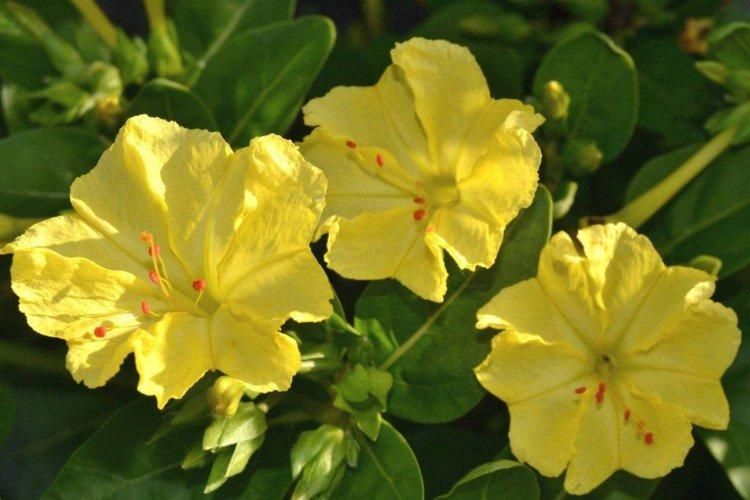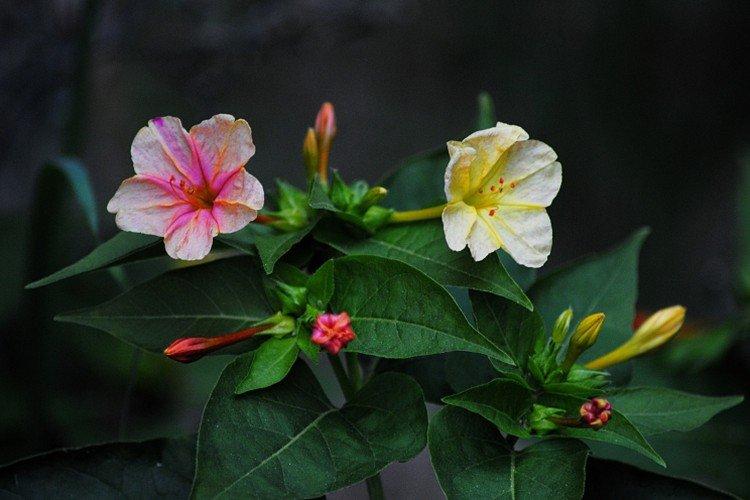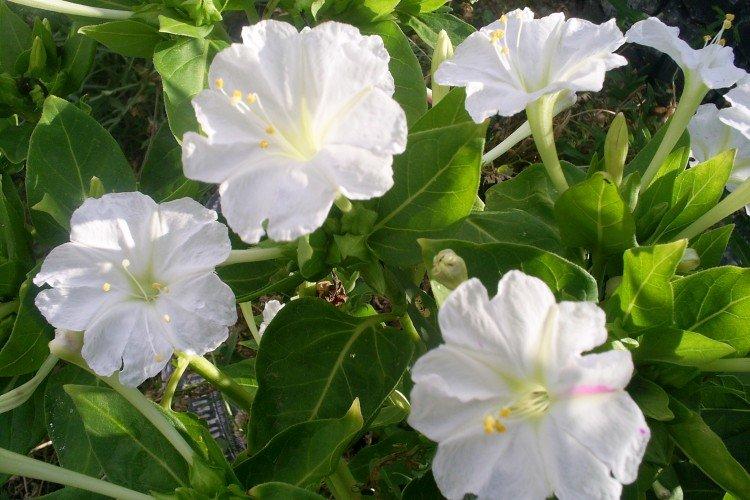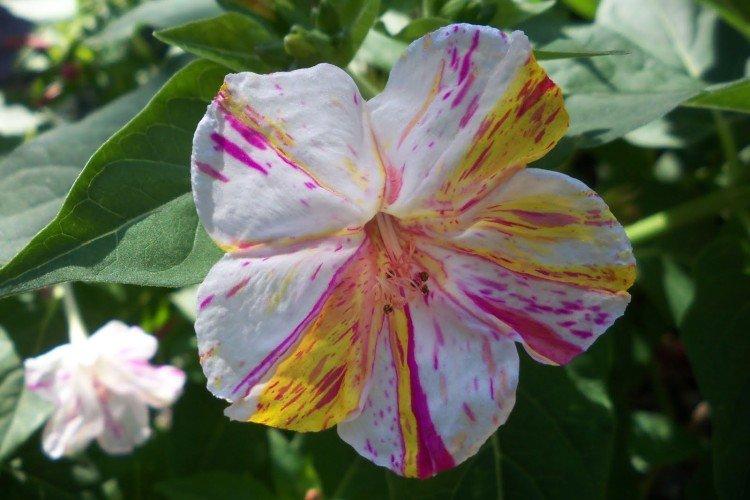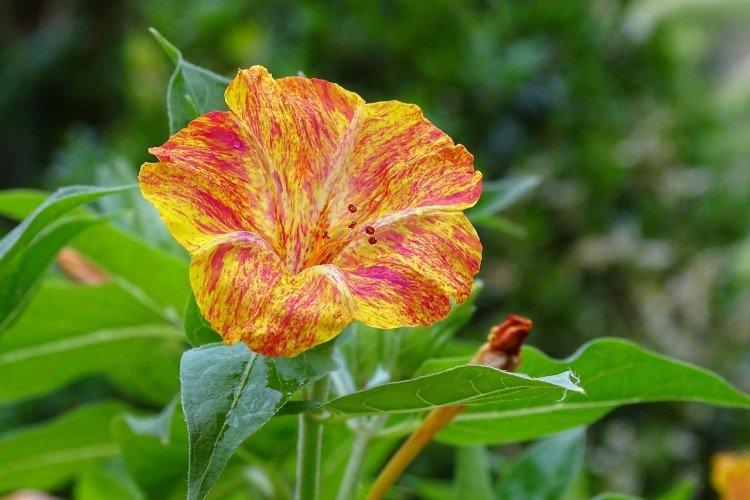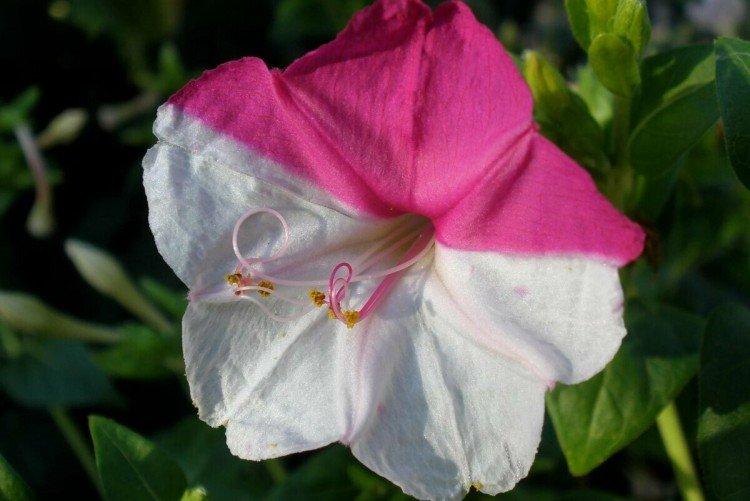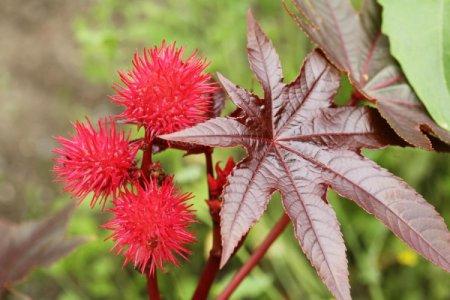
The night flower mirabilis opens its delicate buds only towards the end of the day. He creates a fabulous atmosphere in the evening garden that simply does not leave anyone indifferent. And at the same time, it is easy to care for a tropical plant even in our latitudes. Sounds tempting? Then read on!
general information
The herbaceous mirabilis was nicknamed the night beauty for a reason. In the wild, it grows in South America, and in particular in Mexico. But this thermophilic plant adapts well to different conditions. In combination with its unusual beauty, this is the reason for the popularity of mirabilis around the world.
An elongated rod rhizome looks like a dense rope. Stems are tough and erect, with many lateral shoots. As a result, mirabilis grows into a lush bush with a height of 30 cm to 1 m, depending on the variety.
Its smooth, shiny leaves are beautiful on their own. Shoots lignify over time, but for annuals this is not so important. The bright flowers are up to 3.5 cm in diameter and these colorful bells come in all shades of yellow, pink and white. Varieties with variegated petals are very popular.

Types of mirabilis
The genus mirabilis has about 60 different species, but only a few of them are used in gardening in Russia. We will tell you more about them!
Round-leaved mirabilis
The compact garden species does not grow more than 30-35 cm. Its oval leaves are slightly sticky to the touch. The flowers are small, bright pink and are collected in groups of 2-3 pieces.

Yalapa
A medium-sized branched perennial grows up to 80 cm, depending on the variety. Large funnel-shaped flowers up to 2.5 cm in diameter are collected in loose inflorescences. Mirabilis Yalapa has a very strong sweet aroma.

Wide mirabilis
A large, tall species up to 1.5-2 m in height actively grows in just one season. It is not as decorative as an economic variety, because its large tuber is edible and very aromatic.

Multi-flowered mirabilis
Straight glabrous shoots are covered with long ovoid leaves. Apical inflorescences of 4-6 buds bloom in May, and large purple flowers up to 6 cm in diameter bloom alternately.

Linear mirabilis
It grows in large dense bushes up to 60-100 cm in diameter. It has pale, light green shoots and narrow, elongated leaves. Small white, pink, red or purple flowers are collected in compact clusters.
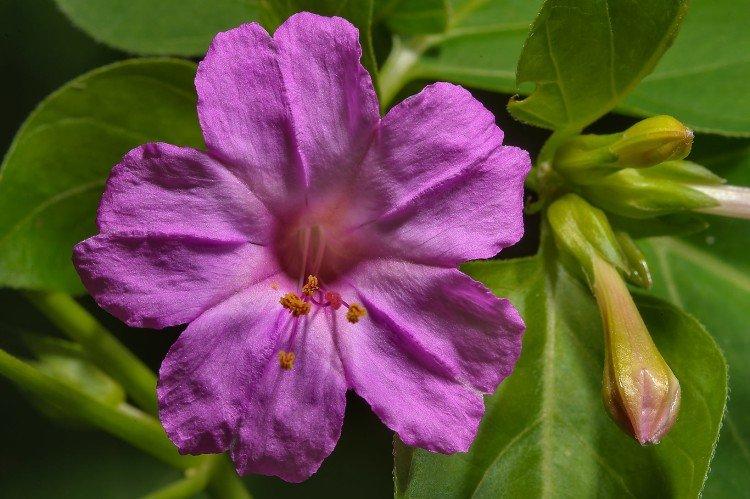
Mirabilis care
The main nuances in care are associated with maintaining an optimal moisture level and preventing fungus. Also keep in mind that mirabilis must be separately prepared for wintering.
Temperature and lighting
A place for a tropical mirabilis must necessarily be light, warm and well ventilated. But at the same time without drafts and sudden gusts of wind. Keep in mind that mirabilis does not tolerate unexpected changes in lighting mode very badly.

Watering
Mirabilis should not dry out, because it can stop blooming. Water the soil every time it dries a couple of centimeters. But it is also impossible to fill it too much in order to avoid rotting of the roots and shoots. At first, it is recommended to even water young plants with a weak solution of fungicides for prophylaxis.

The soil
Good drainage and loose soil that allows water and air to pass through are essential for mirabilis. Sandy soils are excellent.

Fertilizers and feeding
Before planting mirabilis in the garden, dig up the soil with ash and mineral fertilizers. Additional feeding is applied in the summer - about three times a season. So the plant grows more magnificently and blooms.

Pruning
In order for the mirabilis to bush and bloom actively, it must be pruned while still young. Branching is stimulated by pruning of the main shoot.With the onset of the first cold snaps, the mirabilis is cut right to the tuber.

Wintering
The maximum frost resistance of mirabilis is short frosts down to -5 degrees. Therefore, he cannot winter in the garden in the middle lane. We advise you to carefully dig up the tubers, bring them indoors and store them in the ground in a dark, cool place with light, constant humidity. In February, gradually accustom them to the sun and warmth, and then transplant them back into the garden.
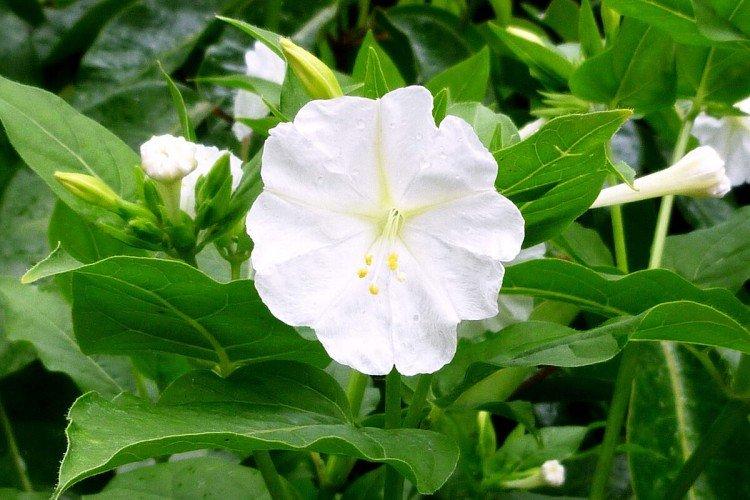
Planting and breeding
In the southern regions, seeds of mirabilis can be sown directly into open ground in April. In northern latitudes, it is germinated through seedlings. In March, distribute large seeds evenly throughout the container or pots, but choose deep containers for the core rhizome.
At a temperature of about +20 degrees, under the film and in a lighted place, the first shoots will appear in 2.5 weeks. In May, the seedlings gradually begin to harden on the street, and after frost they are transplanted into the garden.
Some ornamental varieties can be propagated with tubers to maintain the characteristics of the mother plant. Then, in the fall, the tubers need to be dug up, transferred to sawdust and stored at +5 degrees, and in the spring they should be planted in the ground.
For cuttings, cut off a few strong lignified shoots, dry them, process them with a rooting machine and plant them in peat immediately. After a couple of weeks in warmth and with regular watering, mirabilis will take root. The best time to do this is in the summer. Then, by the spring, the seedlings can be relocated to the site.

Mirabilis pests and diseases
Mirabilis is very resistant to disease, and practically not even susceptible to fungal diseases. If you stick to the recommendations for care, he will not cause you problems. Unless sometimes rust appears on the leaves. This is a fungus, so treat the diseased plant and all its neighbors with fungicides as soon as possible.
Mirabilis is not very attractive even for omnivorous aphids, but sometimes it gets on it from neighboring plants. In this case, thoroughly rinse the bush with soapy water and repeat the procedure several times until the pests disappear.
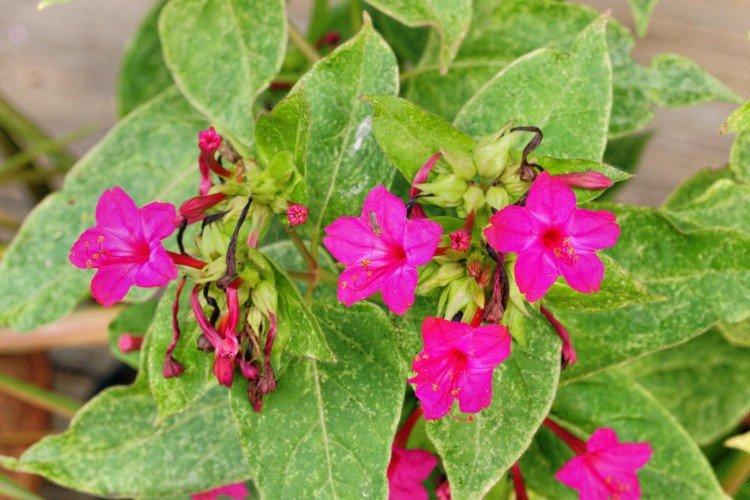
Mirabilis - photo
Despite the fact that each mirabilis flower blooms for only one night, there are so many of them that the plant turns into a real flower meadow for at least a few weeks!
